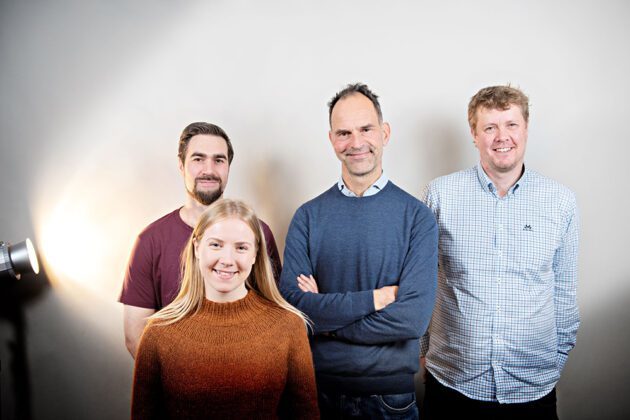The devil is in the details

"It was my interest in quantum physics that led to my fascination with optics and spectroscopic measurements," says Tiril Aurora Lintvedt.
She is now a research fellow at DigiFoods and investigating how Raman spectroscopy can be used in the food industry for acquiring detailed, accurate measurements of the structure and quality of raw materials. In addition to using her knowledge of physics for calculating how to obtain information from the light spectrum of raw materials, she is constantly learning about food chemistry.
Food quality control throughout the value chain
There are several different ways of undertaking spectroscopic measurements suitable for various raw materials and measurements. At DigiFoods, several of these methods will be used for developing real-time measurements on a large scale. The aim is to enable food producers to control raw materials and food quality, all the way from the ocean, soil or cowshed – to the table.
Raman spectroscopy is eminently suitable for undertaking highly detailed molecular measurements. Thus it is possible to measure not just the distribution of fat, protein and water in raw materials, but also fat and protein types and quantities.
“Technological developments are on our side, enabling us to be increasingly faster and more precise. Raman spectroscopy initially consisted of one focused laser that measured a 1mm spot on a sample. Now there are Raman probes that can measure 6 mm spots, and more importantly, we can scan many spots on a sample, thus making measurements more representative of a larger area,” explains Tiril.
Supervisor and head of the DigiFoods Centre Jens Petter agrees.
“Cheaper, better Raman technology means more applications. It was previously used in industries with expensive raw materials, e.g. pharmaceuticals. We are now investigating how Raman measurements of food raw materials can help to increase raw material utilisation, ensure uniform product quality or develop differentiated products.”
Measures fatty acids composition in salmon and bone in chicken by-products
One of the quality targets for farmed salmon is its marine fatty acid content: the higher the percentage of omega-3 fatty acids, the better. Chicken by-products should contain as little bone as possible. Tiril is investigating how Raman can be used for measuring the fatty acid composition of salmon and bone residue in chicken by-products.
She is experimenting to see how fast samples on the conveyor belt can move to ensure that Raman measurements can capture the can capture the necessary details in light spectra and provide exact predictions. The results are promising.
Many speed trials have been conducted. At times the conveyor belt in Nofima’s meat hall has been running constantly. Sometimes cups of minced salmon have been moving along the conveyor while the Raman probe has been scanning samples and capturing enough details for measuring fatty acid composition. Sometimes the aim has been to investigate how fast chicken by-products can be conveyed while still undertaking suitably precise measurements.
“So far I have mainly tested minced raw materials and have used the results to calibrate the instruments so that they measure exactly what we want them to measure, and at the speed we want them to measure. It is harder to measure whole pieces or fillets than mixtures containing an even distribution of fat or bone,” says Tiril.

Functional measurements for the industry
She will now start testing to see what is needed to ensure that the measurements work just as well when whole salmon fillets are transported on the conveyor belt. The aim is to develop strategies that will enable measurements to be made at the same speed as that which applies to fillets moving along the processing line. The measurements must also be equally precise for each fillet, even when they follow each other closely.
Another challenge Tiril is starting to solve is to find the best positions for taking measurements on salmon fillets in order to obtain the information required.
“Our research to date suggests that the belly provides the best information, simply because there is more fat there. But we need to undertake more measurements and analyses before we know exactly how we get the most representative measurements,” she says.
More responsible production
DigiFoods is aiming to develop robots with inbuilt smart optical sensors. It should be possible to make these sensors measure the most suitable spots, at the right speed and frequency – and provide answers about exactly what needs to be identified.
Tiril is keen to be part of the solution and help to achieve responsible production.
“If manufacturers are to succeed, they need correct, understandable information that they know how to use. We need to make the system sustainable. Our aim is optimal usage of all raw materials. I think it’s right to focus on the industry. They already have many automatic processes, so why not make them smarter,” she asks rhetorically.

Contact persons
Research areas
Quality and measurement methods
Topics
Spectroscopy

